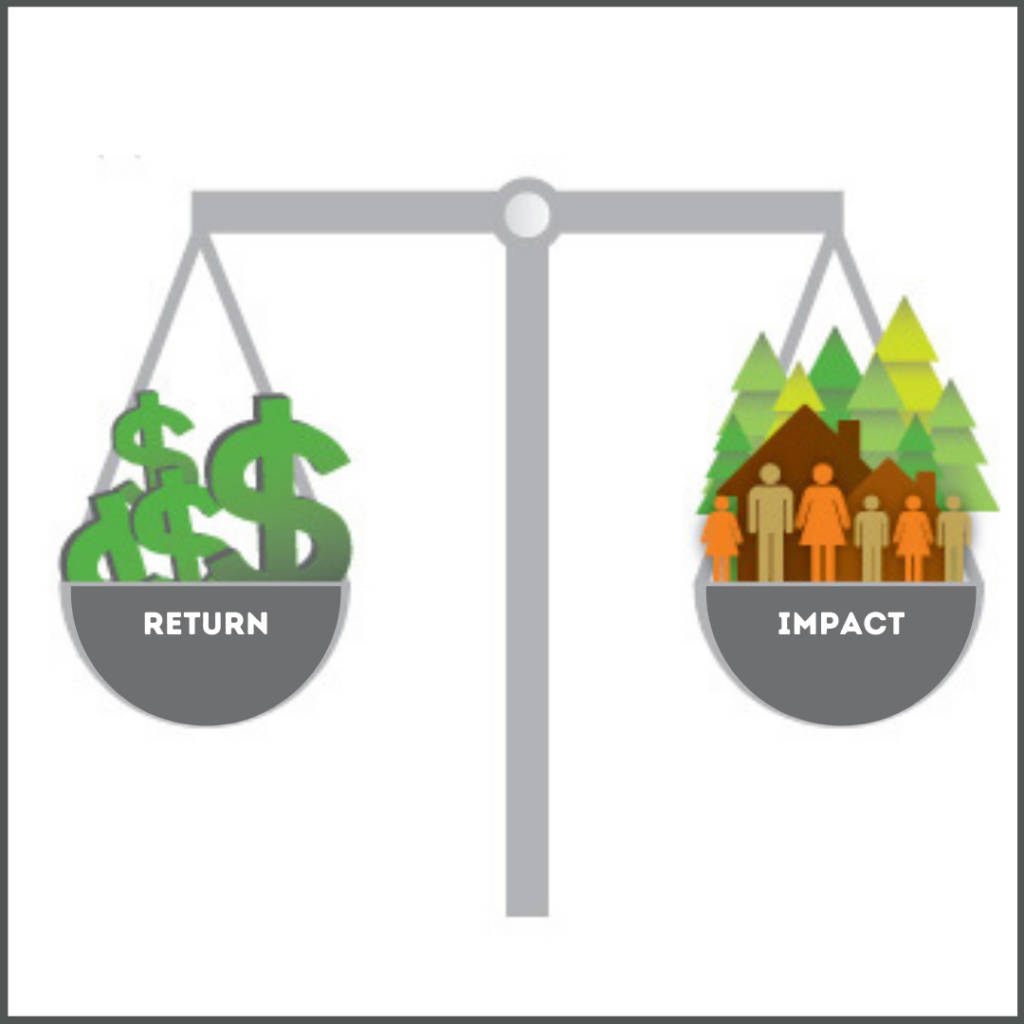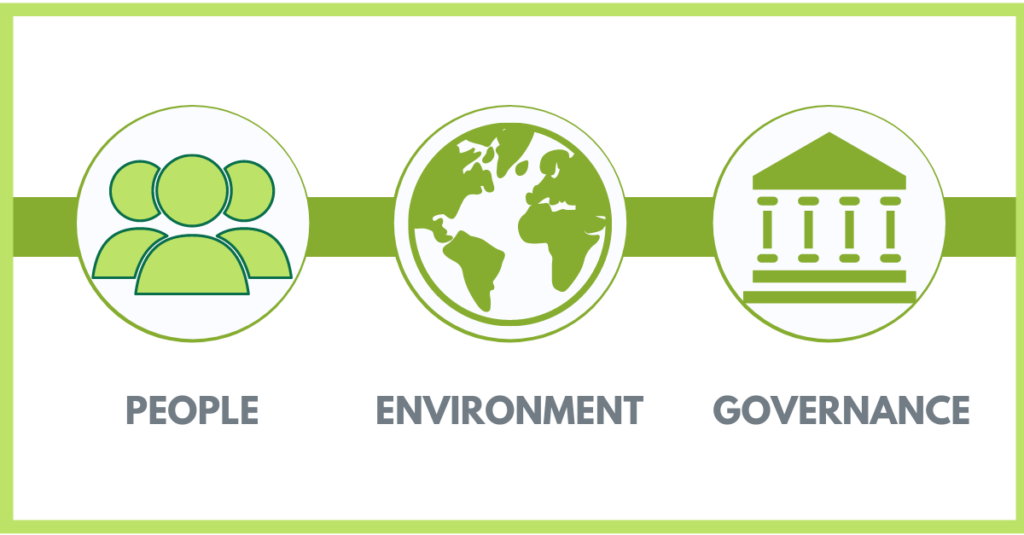Sometimes, it seems we absolutely love jargon in the environmental industry, bandying about three-letter acronyms with abundance… EIA this, EPA that, and now the one that is getting a lot of attention is ESG… yep, another TLA (see what I did there?)!
So what exactly is ESG? Environmental, Social, Governance; that is what it stands for, but what does it mean and who is it relevant to, and what happened to Sustainability Reporting? Is it the same? Why do I need it? So many questions, so little time – so let’s jump right in…
The What:
ESG is an investment strategy, and the Corporate Finance Institute, a ESG training entity, describes it as follows:
“ESG is the acronym for Environmental, Social, and (Corporate) Governance, the three broad categories, or areas, of interest for what is termed “socially responsible investors.” They are investors who consider it important to incorporate their values and concerns (such as environmental concerns) into their selection of investments instead of simply considering the potential profitability and/or risk presented by an investment opportunity” (2021).
However, one of the issues is, one person’s ethical standards and key values are different from another person’s and what was considered ethical in the last 20 years may not be ethical in the next 20 years.
Additionally, ESG investment portfolios differ from each other in their structure, being either inclusive or exclusive. Richard Barrington, Senior Financial Analyst from finance group Money Rates (2021) describes the two strategies as follows:
“You can seek out investments specifically because of their positive impact or you can avoid investments because of their negative behaviour”.
This is essentially including investments [in a portfolio] because they promote certain ethical goals (sometimes known as impact investing}. Impact investors hope the companies they put money into will have a positive effect on society (rewarding good behaviour). The other approach involves excluding investments that violate certain ethical standards. This can be just because of the business they’re in (for example, different people may object to gambling, alcohol, firearms, etc.) or their business practices. Think of an exclusion strategy as punishing bad behaviour (Barrington 2021).

So that is great if you are an investor, but how does that relate to environmental management in your business? You are probably already writing an annual sustainability report, so why get involved with ESG?
The Why and the Who:
Robin Nuttall (co-author of “Connect: How companies succeed by engaging radically with society”) considers this further in a recent podcast (2020).
“The environment, the social factors, and the extent to which you have good governance affect your license to operate as a business within the external world. To what extent do you manage your environmental footprint? To what extent do you enhance diversity? To what extent are you transparent in your contributions to a country? What has an impact on your license to operate in the minds of the stakeholders around you: regulators, governments, and increasingly, NGOs powered by social media.”
As society evolves and changes, consumers are becoming more interested in and demanding high environmental performance standards or sustainability and quality of employment from businesses. Other stakeholders are also becoming involved too. Nuttall (2020) further explains:
“Regulators and policy makers are also more interested in ESG because they need the corporate sector to help them solve social problems such as environmental pollution and workplace diversity”.
And while ESG or sustainability reporting is not a statutory requirement in many places, it may still assist with achieving statutory environmental compliance.
Additionally, there are predictions that in the next four years, the value of ESG assets under management could exceed $53 Trillion [US] and comprise up to a 3rd of the total assets under global management according to analytic predictions by Bloomberg Intelligence in February (2021). The trajectory of growth in ESG managed assets in the last 20 years has been significant. Global sustainable investment was up 68 percent from 2014 to 2018 and has increased tenfold since 2004 (Henisz at al. 2019).

It seems that considering ESG factors within your business can make you a more attractive business prospect and contribute to good corporate citizenship, and thus, the ESG juggernaut is here to stay. But “how do I get involved with making my business ESG friendly and something worthy of ESG investment?” and “what about my Sustainability Report that I already write?” I hear you say… Also, good questions!
The How:
ESG assessments by finance companies and investment companies are often undertaken within a recognised ESG framework; these frameworks are often tailored to specific industries or investment areas. Businesses can also use these frameworks to develop their internal environmental and social management policies and reporting systems.
Commencing with considering which ESG factors are material to your industry and business is a good way to start. For example, your business may involve the large scale mining and processing of copper in Peru. ESG factors likely to be relevant to your company include:
- Environmental – climate change risk management, water resource and usage, emissions and greenhouse gas accounting, large scale chemical and reagent sourcing, management and disposal;
- Social – equitable relocation of communities, social impact assessment, upskilling local people;
- Governance – board diversity, compliance with modern anti-slavery legislation, risk mitigation and management.

Alternatively, for a small family-owned and run entity whose main business is associated with civil works and construction of commercial offices, consideration of:
- Indoor air quality;
- Waste generation and disposal;
- Life cycle assessment and use of low impact materials;
- Employment of Aboriginal trainees;
- Encouraging female apprenticeships, and
- Meeting Government solar rebate requirements may all be more relevant factors.

The frameworks used for assessment of ESG factors would be different for each sector, in the case of the mining, for example, an application of an international standard such as the Equator Principles, or the Global Reporting Initiative Standards, which are broad, well known and apply to wide variety of industries might be relevant. The second example may be more appropriately measured by a more minor, more tailored program, such as achieving GreenStar ratings, an Australian based program addressing sustainability within built communities, buildings and environmental performance of structures. Other sustainability and environmental programs relevant to Australian Business include Water Rating, Energy Rating, Product stewardship programs.
And what about my Sustainability Report…?
The application of a formal ESG framework can be challenging but generally holds more weight than a basic sustainability report. Typically, sustainability reporting aligns a company’s stated environmental/ sustainability goals with their achievements over a period of time, along with some future intention of improving and extending the goal posts. While this is a noble endeavour, the problem is, to quote the proverbial – ‘the road to hell is paved with good intentions’; as what is good enough for one company, falls short on the ethics scale of another (or an investor’s expectation of sustainability); and there is often little standardisation, and therefore comparability between two companies’ internal sustainability reports is difficult. Sustainability reports, may focus predominately on one of the three ESG factors, while often overlooking or only briefly touching on the other two.

It’s also very easy to put things in the ‘too-hard basket’ and avoid addressing tricky environmental issues (or even simply move the goalposts a little to the side!) when not working to a formalised framework. Essentially, you are usually only accountable to yourself (or your internal management).
This is where some of the other benefits of an ESG framework come in, as this can indicate a company’s commitment to being open and honest with its stakeholders and understanding and managing its risks and impacts better.
Basically, it is about accountability and standardised measured performance; if that can be achieved through a Sustainability Report, that’s great. Keep doing it!
The When and Wherefore:
So now the question remains: when do you use an ESG framework vs a sustainability report, which will give the best outcome? Well, in the words uttered by many an environmental consultant, the answer is “it depends”!
It depends on where you are at with your business at present and where you want to go with it, your impacts, your stakeholders’ expectations, and your values. These are all considerations to be made on a case by case basis, as what will work for one company, might not work for another.
Additionally, the option of ‘aligning’ the business with a particular standard, sustainability report or framework as a stepping-stone to undertaking assessment or achieving full compliance with a particular system at a later date is also a viable option. The key is just to get started, and according to the famous quote by Maya Angelou “Do the best you can until you know better. Then when you know better, do better”.
In the meantime, if you would like more than an “It Depends” answer to the question of reporting and ESG for your business, contact Integrate Sustainability on 9468 0338 or enquires@integratesustainability.com.au to see how we can help you.
Reference
Barrington, Richard. 2021. “What Is ESG Investing and How Does It Compare?” Money Rates. January 6. Accessed May 21, 2021. https://www.moneyrates.com/investment/esg-investing.htm.
Bloomberg Intelligence. 2021. “ESG assets may hit $53 trillion by 2025, a third of global AUM.” Bloomberg Professional Services. February 23. Accessed May 21 , 2021. https://www.bloomberg.com/professional/blog/esg-assets-may-hit-53-trillion-by-2025-a-third-of-global-aum/.
Carmody, Broede. 2016. “Australians spend 10 hours a day on internet connected devices: The digital trends your SME needs to know.” Smart Company. February 4. Accessed December 3, 2020. https://www.smartcompany.com.au/technology/australians-spend-10-hours-a-day-on-internet-connected-devices-the-digital-trends-your-sme-needs-to-know/.
Corporate Finance Institute. 2021. ESG (Environmental, Social and Governance). Accessed May 21, 2021. https://corporatefinanceinstitute.com/resources/knowledge/other/esg-environmental-social-governance/.
Hawley, Katherine. 2017. “3 Strategies for Saying ‘No’ – How to let people down gently when they’re asking too much.” Psychology Today. February 28. Accessed December 1, 2020. https://www.psychologytoday.com/intl/blog/trust/201702/3-strategies-saying-no .
Henisz at al., Witold, Koller, Tim, & Nuttall, Robin. 2019. “5 Ways That ESG Creates Value.” McKinsey Quarterly. November 14. Accessed May 21, 2021. https://www.mckinsey.com/business-functions/strategy-and-corporate-finance/our-insights/five-ways-that-esg-creates-value.
McKinsey and Company. 2020. “Why ESG Is Here To Stay.” McKinsey and Company (podcast). May 26. Accessed May 21, 2021. https://www.mckinsey.com/business-functions/strategy-and-corporate-finance/our-insights/why-esg-is-here-to-stay#.
Stoneham, Bray. 2017. “This is How Long the Average Australian Spends Using Their Phone Every Year.” Australian Men’s Health. May 7. Accessed December 1, 2020. https://www.menshealth.com.au/time-aussies-spend-on-phone#:~:text=The%20study%20found%20that%20the,whopping%2038%20days%20a%20year!
2019. “Stress relief: When and how to say no.” Mayo Clinic. March 28. Accessed December 3, 2020. https://www.mayoclinic.org/healthy-lifestyle/stress-management/in-depth/stress-relief/art-20044494.

